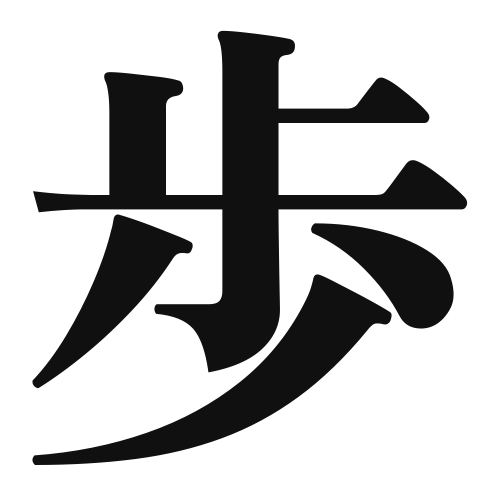1. Overview of Meaning
The kanji “歩” (pronounced “bu” or “ho”) means “to walk” or “step.” It represents the action of moving by foot and is often associated with progress or movement in a broader sense.
2. Formation and Radical
Formation of the Kanji: The kanji “歩” is a phonetic-ideographic character (形声文字). It combines the meaning of walking with a phonetic component that suggests its pronunciation.
Radical: The radical for “歩” is “止” (meaning “to stop”), which is related to the concept of movement and positioning.
3. Examples of Usage
Common Words and Phrases:
- 歩く (aruku) – to walk
- 歩道 (hodō) – sidewalk
- 一歩 (ippo) – one step
Example Sentences in Daily Conversation:
- 毎日、学校まで歩いて行きます。 (Mainichi, gakkō made aruite ikimasu.) – I walk to school every day.
- 一歩ずつ進んでいこう。 (Ippo zutsu susunde ikou.) – Let’s move forward step by step.
4. Synonyms and Antonyms
Similar Kanji:
- 走 (hashiru) – to run; this implies a faster movement compared to “歩”.
- 進 (susumu) – to advance; this can refer to moving forward in a more abstract sense.
Antonyms:
- 止 (tomaru) – to stop; this is the opposite of moving or walking.
5. Cultural and Historical Background
Relation to Japanese Culture: The concept of walking is deeply embedded in Japanese culture, symbolizing not just physical movement but also personal growth and progress in life.
Proverbs and Idioms:
- 千里の道も一歩から (Senri no michi mo ippo kara) – A journey of a thousand miles begins with a single step. This proverb emphasizes the importance of taking the first step towards any goal.
